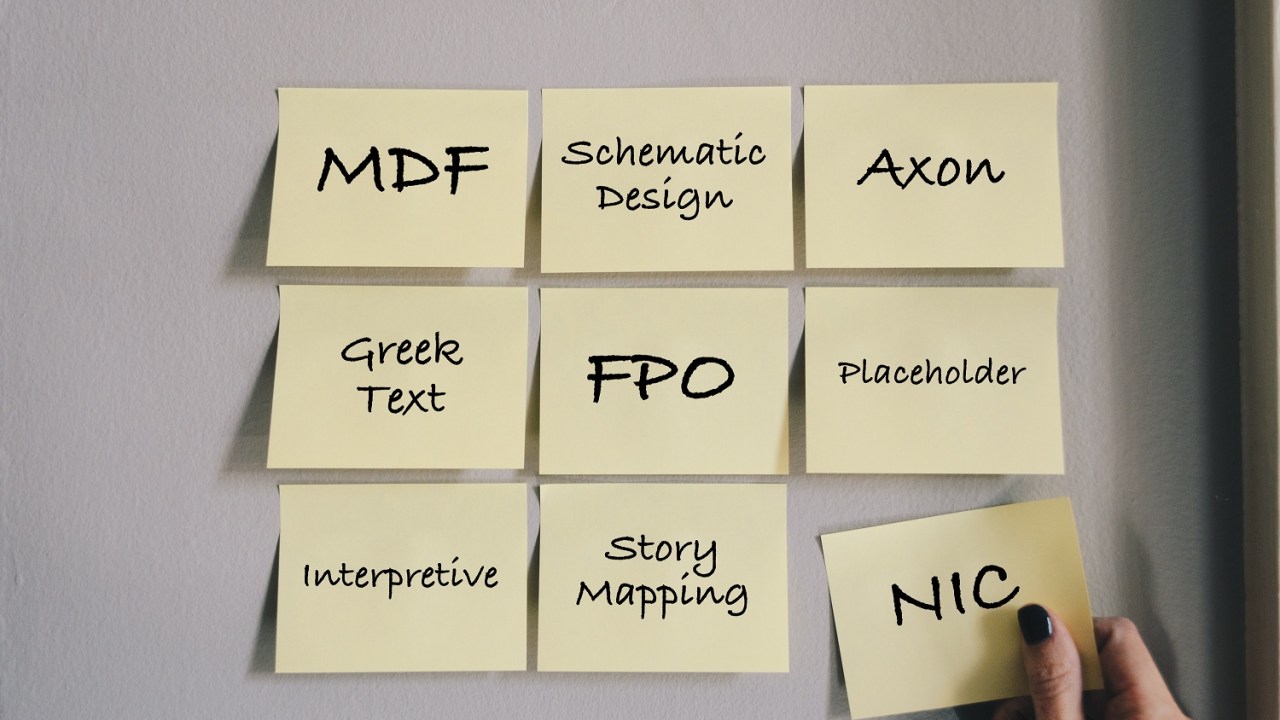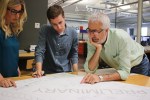
My financial planner talks at lightning speed, using terms like “asset class diversification,” “large-cap funds,” and “variable annuity.” Embarrassingly, I don’t know what any of it means, and it’s overwhelming. I simply want him to understand my financial goals and risk aversion, and then to figure out the rest for me. We museum and exhibition professionals need to keep in mind that this is often how our clients, partners, and other stakeholders feel.
Years ago I was giving a presentation to a group of museum fundraisers. After speaking for two hours with terms such as “bubble diagram,” “elevations,” and “interpretation,” someone in the room raised their hand and asked, “What’s an elevation?” We speak different languages. Our unique profession has its own lexicon, so when phrases like “Gobo projectors,” “schematic design,” and “image acquisition” are tossed around, it’s reasonable for those unfamiliar with the exhibition design process to feel exactly like I do when chatting with my financial planner.
 Whether we’re an exhibit designer talking with a prospective client, or a museum curator chatting with someone in the development or facilities department, we need to recognize that the industry jargon and phrases that seem like second nature to us, might be a foreign language to others. Here are five tips for bridging this language barrier.
Whether we’re an exhibit designer talking with a prospective client, or a museum curator chatting with someone in the development or facilities department, we need to recognize that the industry jargon and phrases that seem like second nature to us, might be a foreign language to others. Here are five tips for bridging this language barrier.
- Know Your Audience – If you’re speaking with a group about exhibition design, for example, gauge their familiarity with the topic. Not everyone has gone through the process before, whereas others may have done it a million times. Additionally, adjust your language to fit the scenario. As former German Chancellor, Willy Brandt, once joked, “If I’m selling to you, I speak your language. If I’m buying, dann müssen Sie Deutsch sprechen.”
- Be Specific and Consistent – Be aware of inconsistent terminology usage across our industry. If possible, eschew using vague words like “preliminary,” “conceptual,” and “placeholder.” Different people will interpret these to mean different things, based on their own industry lingo and professional background. If you know that a word is open to interpretation, clarify it.
- It’s Not All About You – Famed U.S. journalist, Flora Lewis, said, “Learning another language is not only learning different words for the same things but learning another way to think about things.” Not only is it your responsibility to learn the vocabulary of those with whom you’re speaking, it’s also fun! Listen to the words they use, and how they use them. Talk openly about how you have different languages, and encourage questioning.
- Check-In – Heed the warnings of my botched fundraising presentation and “What’s an elevation?” story. When speaking with professionals outside of our niche industry, whether in a formal presentation or hallway chat, don’t talk endlessly. Pause periodically and ask if there are questions. Check for understanding. Additionally, don’t talk down or sound patronizing. Better yet, be self-deprecating of your own lack of knowledge about their trade language.
- PATA (Pay Attention to Acronyms) – FPO, MDF, CMS, and FF&E. Do these sound familiar? If you’re an exhibit designer, you know exactly what they mean. Meanwhile, your museum’s marketing team is using CTA, PPC, and KPI (Call-to-Action, Pay-per-Click, and Key Performance Indicator). Every industry—and each subset within those industries—has its own collection of acronyms. When you rattle off “SD, DD, and CD” in reference to the design phases, don’t expect everyone to know what you’re talking about. FYI: FPO (For Placement Only), MDF (Medium Density Fiberboard), CMS (Content Management System or Collections Management System), FF&E (Furniture, Fixtures, and Equipment).
There’s a reason that project contracts and technical specifications often include lengthy glossaries. It’s because someone figured out long ago that few people on earth understand those documents. They’re a mystery! Whatever role you have in the museum industry—exhibit developer, curator, educator—people are looking to you for help and answers, and it’s important that you’re translating your extensive knowledge of whatever specialty you have into communication that others can understand.
And on a final note: Moving forward with the vision statement and interpretive plan, get your ducks in a row with the wireframes and interactives, keep everyone in the loop about what’s NIC and VIF, push the envelope on the label copy, hammer it out during preliminary conceptual brainstorming, pick the low-hanging fruit during SD, and do some blue-sky thinking with those “look-n-feel” illustrations.
About the Author
David Whitemyer is the Director of Business Development at Luci Creative, an exhibit and experience design firm, and an instructor in Johns Hopkins University’s Museum Studies program. He can be reached at david@lucicreative.com









David, this is so important. Thanks for emphasizing communications and clarity…and listening. Common vocabulary is critical to project success!
Great advice, David. You can’t go wrong NOT assuming, expecting others to understand what you do, how you do it, what you call it, and what you hope to accomplish. (And, we.re talking staff not all those members of the board and advisors who are many steps removed from our work.) Always good to ask yourself: Do I understand what everyone else does, etc? Probably not. Complex projects, like exhibitions and museum planning, involve lots of people with specialties and expertise. Teach and learn, learn and teach. Thanks for posting.